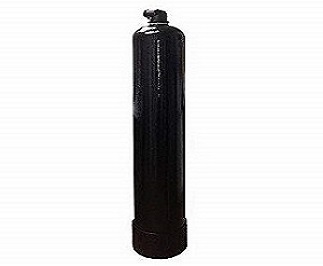
What is pH?
pH is a measurement of the hydrogen ions (acid) present in a solution (water). The pH scale is a logarithmic scale (ranging from 0-14) used to determine that hydrogen concentration. At a neutral pH of 7.0, there is an equal amount of hydrogen H+, as there is of hydroxyl radicals (OH-).
What is Acid/Acidic Water?
A water analysis with a number below 7 is considered acidic water (aggressive) and any number above 7 is considered basic water (alkaline water). A pH of 5, for example, results in ten times more acidic water than 6 and 100 times more acidic water than 7. The opposite is true for numbers above 7, which can represent the lack of hydrogen in the form hydroxyl radicals. The greater the number on the pH scale represents the increased number of hydroxyl radicals present and the more alkaline the water becomes.
Why is Acid Water Bad?
Acid water (low pH) can dissolve copper plumbing, pit fixtures, damage valves, and attack appliances such as dish washers, hot water heaters, and washing machines. Acid water also can impart a bitter taste.
How to Raise a Water’s pH?
The most effective, least costly, and the method that requires the least maintenance to treat Acid water is utilizing an acid neutralizing filter. Acid filters use a sacrificial media that slow dissolves and increases the water’s pH. Acid neutralizing filters for well water are very common as rain combines with carbon dioxide to form carbonic acid as the water works its way down to the aquifer.
How to Treat Acidic Water with Different Methods?
In the past, a solution of baking soda (sodium bicarbonate or soda ash (sodium carbonate) was injected into the water. This method requires a chemical holding tank, stirring system, and an injection pump. A method of trial and error with continuous testing coincides with this. That is why acid neutralizers are more popular.
What are Common Uses of Acidic Water?
Acid water can help with cleaning surfaces. Acidic water with added bleach is more effective when mixing disinfectants than using water with a higher pH. The benefits are minimal though and raising the pH makes the water more usable. But for farms or other applications, a dedicated spicket before treatment is installed so acid water can be pulled from the source if needed.
Other Application requiring pH adjustment
In the US, there are a number of state and federal regulatory requirements implemented to curb the discharge of acidic or alkaline effluents into lakes, streams, and sewer systems. Any non-compliance to these laws may result in fines or other severe legal consequences. It can be rightly said that the demand for pH neutralization systems has increased among process engineers or water authorities who want to avoid a notice of violations (N.O.V’s), improve safety of users and other life forms consuming the water, and lower their operational costs. pH neutralization for wastewater treatment or drinking water treatment can be accomplished using various pre-designed pH neutralization systems.


